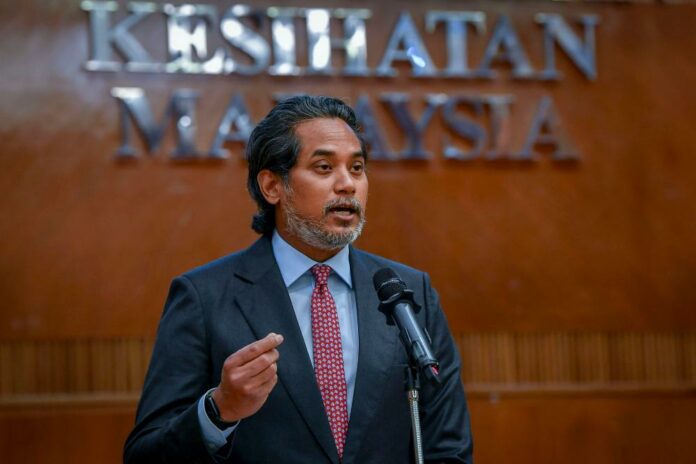PUTRAJAYA, July 25 — A total of nine cases of suspected monkeypox had been notified to the Health Ministry as of July 23, and all of them had been confirmed negative, said Health Minister Khairy Jamaluddin.
Following the announcement by the World Health Organisation (WHO) that the monkeypox infection is now a Public Health Emergency of International Concern (PHEIC), he said, the ministry had reminded all health facilities to be aware of the current monkeypox situation and increase detection cases among patients at risk.
He said non-Malaysian travellers should fill in the traveller’s card in the MySejahtera application, and travellers arriving from countries with reports of monkeypox would receive pop-up health messages every day through MySejahtera to remind them to monitor monkeypox infection symptoms and health status.
“Travellers arriving from those countries are advised to monitor their personal health status every day, including for symptoms of monkeypox infection for a period of 21 days from the date of arrival in Malaysia,” he said in a statement today.
Symptoms of monkeypox are fever, fatigue, maculopapular rash that starts on the face and then spreads to the palms and soles followed by other parts of the body, muscle spasms and swollen lymph nodes.
Khairy said for the period from May 1 to July 23, a total of 531,630 travellers were recorded to have arrived from countries that reported cases of monkeypox and the MySejahtera application issued a Monkeypox Health Alert to all travellers.
“MoH calls on individuals with symptoms of monkeypox to immediately go to a health facility for examination and further treatment. Avoid contact with other people to prevent infecting others,” he said.
He said said operators of premises which provide services that involved skin contact with customers, such as spas and massages, should exercise personal and environmental hygiene, as well as ensure their customers are healthy, do not experience symptoms of monkeypox and do not have maculopapular rash (skin rash).
The monkeypox virus can be spread through direct contact with a rash or lesion that occurs on the skin, either a new lesion or a scab, or fluid from the lesion, he added.
Khairy said the ministry had also increased the capacity of laboratories in the country from two to 12 laboratories that can conduct monkeypox virus detection tests, of which eight are government laboratories.
The ministry of established sentinel surveillance at several private and government clinics to monitor the incidence of rash or skin lesions in addition to increasing surveillance at the country’s international entry points, he added.
On July 23, the WHO declared the monkeypox outbreak as a PHEIC based on several factors, including the sudden increase in the number of cases reported by non-endemic monkeypox countries, as well as scientific evidence and data related to the infection.
On June 17, a total of 2,103 cases of monkeypox were reported in 42 countries with one death. The monkeypox case was first reported by the WHO on May 15 this year.



















